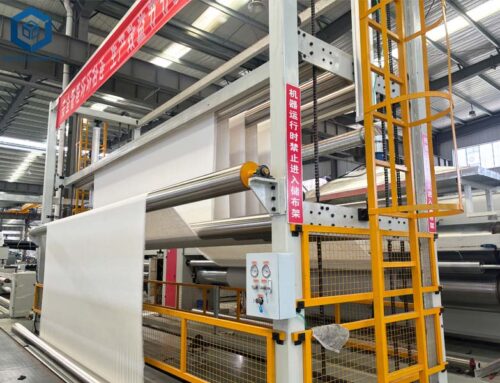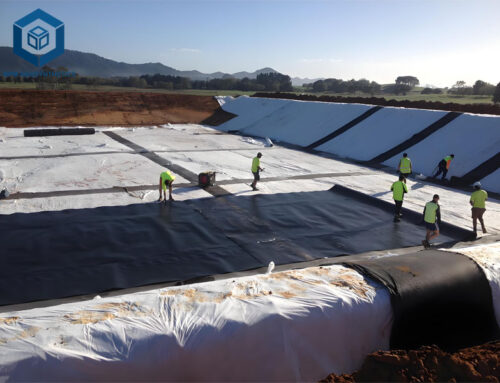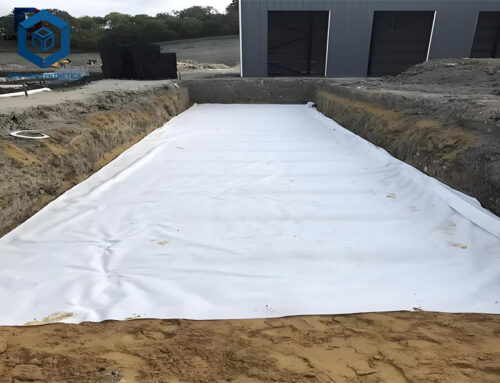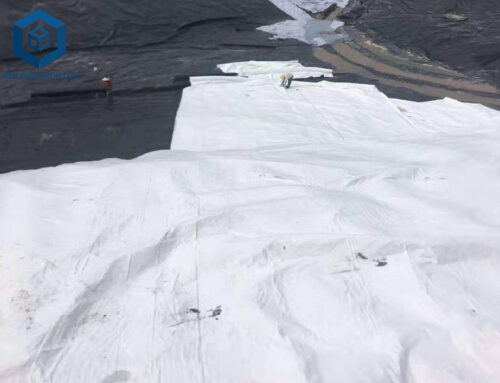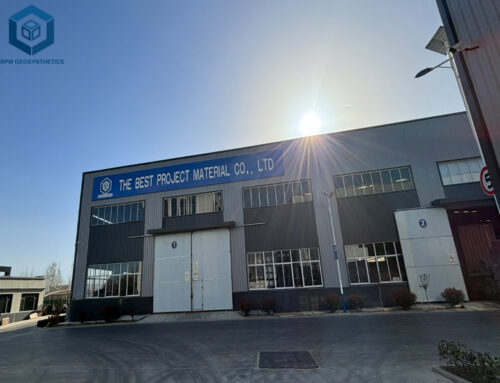Filament geotextile and staple fiber needle punched geotextile fabric are two most common non woven geotextile for civil engineering applications. Filament and staple fiber needle punched geotextile fabric serve multiple functions such as filtration, drainage, separation, protection, and erosion control. What’s the filament geotextile made of? What’s the staple fiber needle punched geotextile made of?
What is the similarity of filament and staple fiber needle punched geotextile fabric? What is the difference of filament geotextile fabric vs staple fiber needle punched geotextile fabric? What are the advantages of each?
BPM geotextile is the leading geotextile manufacturer and supplier with 13+ years of industrial experiences. We wholesale high quality non woven and woven geotextile fabric at competitive factory price. In this article, let us explain the similarities and differences of filament geotextile fabric vs staple fiber needle punched geotextile fabric. We hope this article can help you to choose the right geotextile fabric beteew filament and staple fiber needle punched geotextile fabric.This article covers the following sub topics.
- What is filament geotextile?
- What is staple fiber NeedlePunched geotextile?
- Similarities between filament and staple fiber geotextile
- Differences in raw materials between filament and staple fiber geotextile
- Differences between filament and staple fiber geotextilein physical characteristics
- Differences between filament vs staple fiber geotextilein recyclability
- Differences between filament vs staple fiber geotextilein production methods
- What are Similarities and differences between filament geotextile vsstaple fiber geotextile in terms of their functions?
- Applications of filament and staple fiber NeedlePunched geotextile
1 Brief Introduction of Filament Geotextile and Staple Fiber Geotextile?
1.1 What is Filament Geotextile?
Filament continuous geotextile is a type of non woven geotextile made from continuous filaments of synthetic fibers. Synthetic fibers include polyester and polypropylene. It is designed to provide strength, durability, and filtration properties in various civil engineering and construction applications. The term “continuous” refers to the uninterrupted nature of the filaments used in the geotextile.
1.2 What is Staple Fiber Needle Punched Geotextile?
Staple fiber needle punched geotextiles, specifically short-fiber nonwoven varieties, stand out as the most economical and widely employed fabric in ensuring the optimized performance and extended design life of soil or granular layers across a spectrum of civil, coastal, and environmental engineering initiatives. These needle-punched geotextiles exhibit a felt-like texture, offering remarkable flexibility and featuring a fibrous network with distinctive pores, rendering them well-suited for applications in filtration, drainage, separation, and protective roles. This is the most common type in BPM geotextile factory.
2. Similarities between Filament and Staple FiberNeedle Punched Geotextile Fabric
Both filament geotextile and short fiber geotextile are both non woven geotextile fabric used in civil engineering applications, which can enhance the stability and durability of engineering structures, providing multiple functions such as separation, filtration, protection, and erosion prevention. They are designed to improve the performance and durability of civil engineering projects and can be applied in applications such as road construction, slope stability, drainage systems, landfills, coastal protection, etc. that require soil filtration, or separation.
Conterminous filament geotextiles and short fiber geotextiles are usually installed by unfolding and placing them on a prepared surface. They can be mechanically fixed using nails, fixing nails, or other methods. The installation process of filament geotextile and short fiber geotextile is relatively simple and can be completed using standard construction equipment.
Long filament geotextiles and short fiber geotextiles can be combined with other geosynthetic materials, such as geomembranes, geogrids, or geogrids, to enhance their performance in specific applications. They can complement each other by providing additional functionality or improving overall system performance.
In the view of non woven geotextile fabric manufacturers, although there are differences between the two types of geotextiles, both filament geotextile and staple fiber geotextile are important geotextiles with their unique characteristics. The choice of one depends on the project requirements, site conditions, and specific engineering requirements of the application.
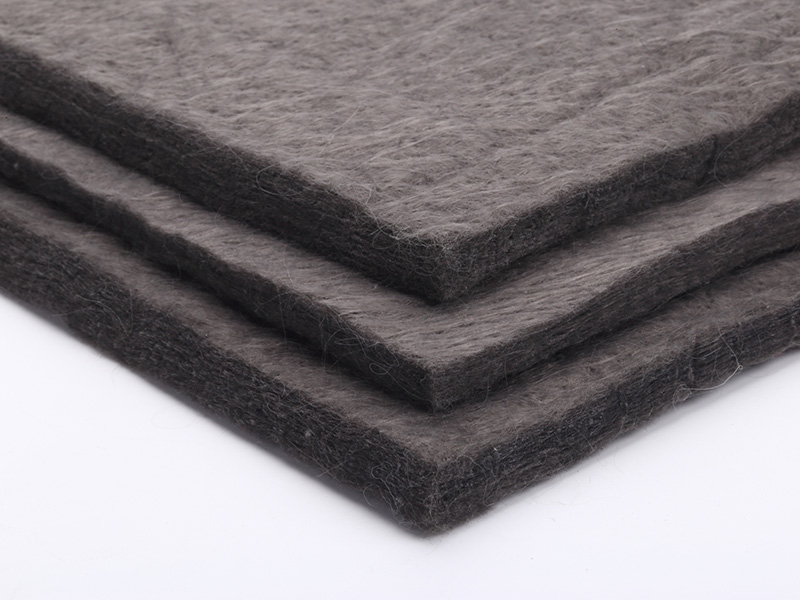
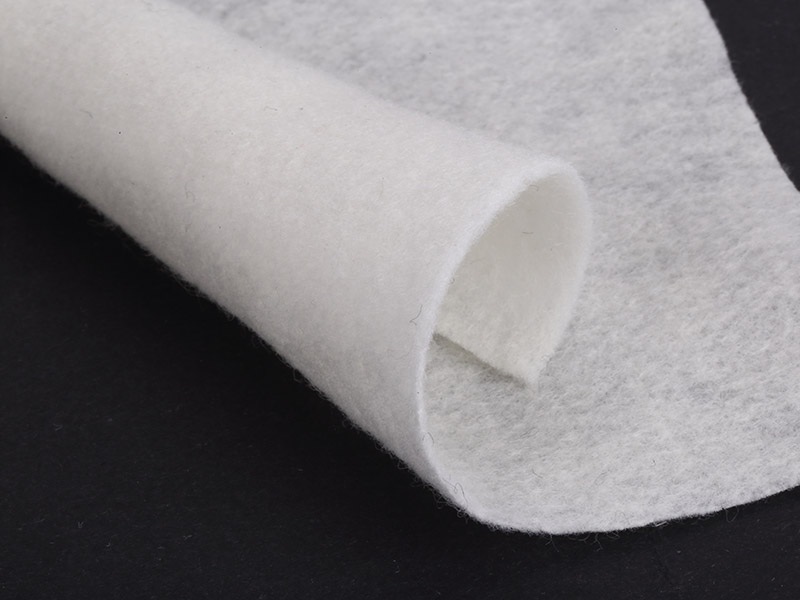
3 What is the Difference of Filament Geotextile Fabric vs Staple Fiber Needle Punched Geotextile Fabric
3.1 Differences in Raw Materials of Filament vs Staple Fiber Needle Punched Geotextile Fabric
Comparison in terms of fibers. The length of staple fibers is generally between a few millimeters and a few centimeters, and can be cut and controlled according to specific application requirements. The length of staple fibers determines the structure and characteristics of geotextiles. The fiber diameter of filament geotextile is usually fine, ranging from tens of micrometers to hundreds of micrometers. A finer fiber diameter can provide better filtration performance and soil retention capacity. The fiber density of filament geotextile refers to the number of fibers per unit area. Higher fiber density can provide higher strength and stability, suitable for applications that require greater load carrying capacity.
3.2 Differences of Filament vs Staple Fiber Needle Punched Geotextile Fabric in Physical Characteristics
3.2.1 Fiber Interlocking
Filament Geotextile. Due to the continuous nature of filament fibers, filament geotextiles have a higher level of fiber interlocking. This interlocking contributes to the geotextile’s strength and stability.
Staple Fiber Geotextile. Staple fibers, being shorter and randomly oriented, have less inherent fiber interlocking. However, staple fiber needle punched geotextile fabric can achieve interlocking through mechanical entanglement during the manufacturing process.
3.2.2 Strength and Stiffness
Filament geotextiles generally exhibit higher strength and stiffness due to the continuous and parallel arrangement of fibers. They can withstand higher loads and provide structural support.
Staple fiber neddle punched geotextile may have lower strength and stiffness compared to filament geotextiles due to the random fiber orientation. However, they can still offer sufficient strength for many geotechnical applications.
3.2.3 Filtration and Permeability
Filament geotextiles typically have smaller pore sizes and better filtration efficiency. They can effectively retain fine particles while allowing water to pass through.
Staple fiber geotextiles may have larger pore sizes due to the random fiber orientation. This can result in relatively higher permeability, allowing water to flow more easily through the geotextile.
3.2.4 Construction and Installation
Filament geotextiles are usually easier to handle during the construction and installation process. Due to the characteristics of continuous fibers, filament geotextiles can be more easily laid and fixed on the ground. While short fiber needle punched geotextiles may be more prone to fracture or fiber separation during processing and installation due to their short fiber length and random arrangement.
3.3 Differences Between Filament and staple fiber Needle Punched Geotextile Fabric in Recyclability
This is the key difference between filament and staple fiber geotextiles lies in their recyclability.
3.3.1 Continuous Filament Geotextile Fabric
Filament fiber geotextiles are typically made from continuous, unbroken fibers. These fibers are generally difficult to separate and recycle individually. As a result, the recyclability of filament fiber geotextiles is limited. In most cases, these geotextiles are not easily recyclable and are often disposed of in landfills or incinerated after their useful life.
3.3.2 Staple Fiber Geotextile Needle Punched Fabric
Staple fiber needle punched geotextiles are made from shorter fibers that are randomly arranged and loosely held together. This construction allows staple fiber geotextiles to be more easily separated and recycled. At the end of their service life, staple fiber geotextiles can be mechanically or chemically processed to separate the fibers, which can then be reused or recycled into new geotextile products or other applications.
While filament geotextiles have limited recycling options, staple fiber geotextiles offer additional recycling opportunities. The shorter and more easily separable fibers in staple-fiber geotextiles can be processed and recycled into new products, reducing the need for virgin materials. This recycling potential helps geotextile manufacturers to adopt a more sustainable approach to geotextile use and waste management.
3.4 Differences of Filament vs Staple Fiber Needle Punched Geotextile in Production
There are differences in production methods between filament geotextiles and staple fiber geotextiles, which can affect their physical properties and performance. Main differences:
3.4.1 Filament Non Woven Geotextile Manufacturing Process
Filament geotextile is made of continuous fibers, which are directly extruded by spinning equipment. The production process involves extruding molten synthetic polymer materials (such as polyester or polypropylene) through spinning pores to form continuous fibers.
3.4.2 Staple Fiber Non Woven Geotextile Manufacturing Process
The process of manufacturing staple fiber geotextile involves spinning or cutting continuous fibers into shorter lengths. Then, the staple fibers are unfolded, arranged, and formed into a network or felt like structure. Staple fibers are usually fixed together using mechanical methods (such as acupuncture) or thermal bonding processes.
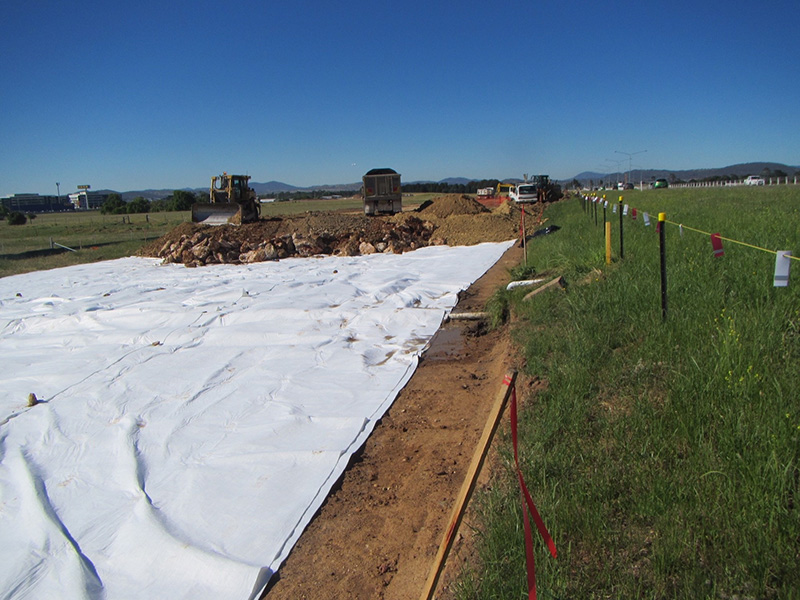
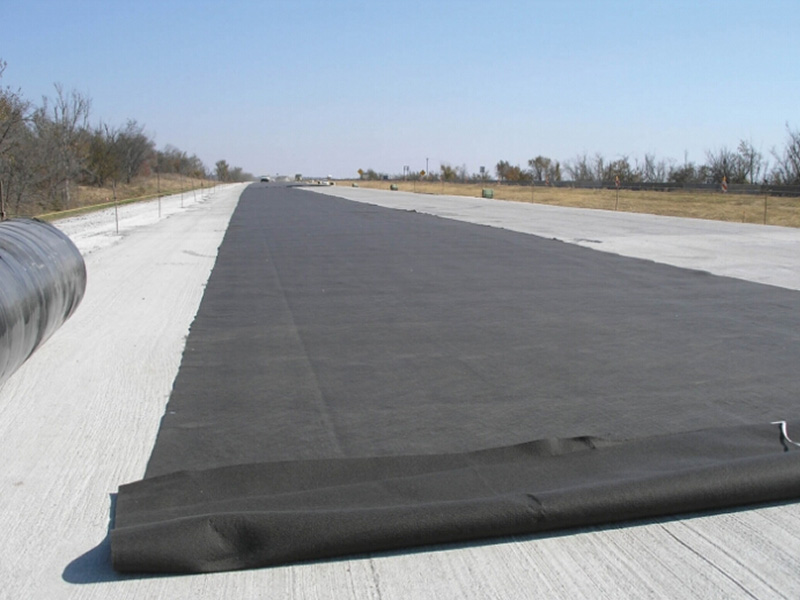
4 What are the Similarities and Differences Between Filament And Short Fiber Geotextiles in Terms of Functions?
4.1 Similar Functions
4.1.1 Soil Separation
Whether it is filament geotextile or staple fiber geotextile, they can effectively separate different layers of soil or other materials, preventing mixing and infiltration between different particles. This helps to maintain the stability of the soil and the integrity of the engineering structure.
4.1.2 Soil Filtration
Both types of geotextiles can be used for filtration applications by retaining solid particles and allowing water to pass through. Filament geotextiles and short fiber needle punched geotextile fabric can prevent soil particles from flowing with water and ensure that water remains relatively clean when passing through geotextiles.
4.1.3 Soil Erosion Prevention
Both filament geotextiles and short fiber needle punched geotextile fabric can be used to control and reduce soil erosion. They can stabilize and protect the soil surface, prevent erosion and damage to the soil by water flow and wind erosion.
4.2 Different Functional Performance
4.2.1 Strength and Stability
Due to the use of continuous fibers, filament geotextiles have high tensile strength and stability. In contrast, staple fiber needle punched geotextiles have tighter fiber entanglement and can provide a certain degree of strength and stability, but they are usually not as good as long fiber geotextiles.
4.2.2 Water Filtration Performance
The continuous fiber structure of filament non woven geotextile fabric limits its filtration performance, and smaller particles may pass through the gaps between the fibers. Staple fiber geotextile, due to its tighter fiber entanglement, can more effectively filter smaller particles.
4.2.3 Construction Adaptability
Due to the adjustable fiber length of staple fiber non woven geotextile fabric, it can be customized according to specific construction needs and engineering requirements. Filament geotextiles typically have a uniform fiber length and are difficult to adjust.
The above are some similarities and differences in the functions of filament geotextile and staple fiber geotextile. Choosing the appropriate non woven geotextile types based on specific engineering needs and application environments will help achieve optimal performance and effectiveness.
5 Applications of Filament and Staple Fiber Non Woven Geotextile
5.1 Filament Non Woven Geotextile Fabric
River and coastal protection. Filament non woven geotextile fabric can be used for river bank slope protection, beach protection, river restoration, etc. to prevent water erosion and wave impact, increase soil stability and impact resistance.
Artificial wetlands. Filament non woven geotextiles are often used for wetland filters, wetland vegetation restoration, etc., to help maintain the water quality and ecosystem of wetlands, and play a role in filtering and protecting soil.
Mine reclamation. Filament non woven geotextile fabric can be used in mine reclamation projects to help restore soil structure and vegetation in mining areas. They can reduce soil erosion, improve vegetation growth conditions, and reduce environmental pollution.
Soil and water conservation. Filament non woven geotextiles can be used in soil and water conservation projects, such as slope management and vegetation restoration. They can reduce water flow velocity, increase water infiltration and soil water retention capacity, thereby reducing soil erosion and water resource loss.
5.2 Staple Fiber Non Woven Geotextile
Landfill. Staple fiber non woven needl punched geotextile fabric is widely used in the covering system of garbage landfill to control the flow of leachate and the diffusion of pollutants. They can play a role in isolation, filtration, and anti-seepage, protecting groundwater and the surrounding environment.
Pipeline protection. Staple fiber non woven geotextile can be used for pipeline protection to prevent corrosion and damage to the pipeline. They can be used as protective layers around pipelines to reduce soil movement and the impact of external environment on pipelines.
Green walls and green roofs. Staple fiber geotextile can be used in green wall and green roof systems to help plants grow and maintain soil moisture. They provide support and protection, enabling plant roots to grow firmly and promoting the improvement of the ecological environment.
Roadbed reinforcement. Staple fiber non woven geotextile fabric can be used in roadbed reinforcement engineering to increase the stability and bearing capacity of the roadbed. They can reduce soil settlement and lateral displacement, improve the durability and safety of roads.
6 Summary
Overall, filament geotextiles are suitable for large geotechnical engineering projects that require high strength, durability, and impermeability, while staple fiber non woven geotextiles are suitable for small geotechnical engineering projects that require functions such as filtration, drainage, soil conservation, and vegetation restoration. The selection of suitable geotextile types should be comprehensively considered based on specific engineering needs, soil conditions, and budget. The specific requirements for geotextile in each project can be consulted with the geotextile fabric suppliers. BPM manufacrtures and wholesales high quality woven and non woven geotextile for worldwide customers, we also offer consultant and install services. If you have any suggestions or questions, please contact us.
Thank you for reading.

